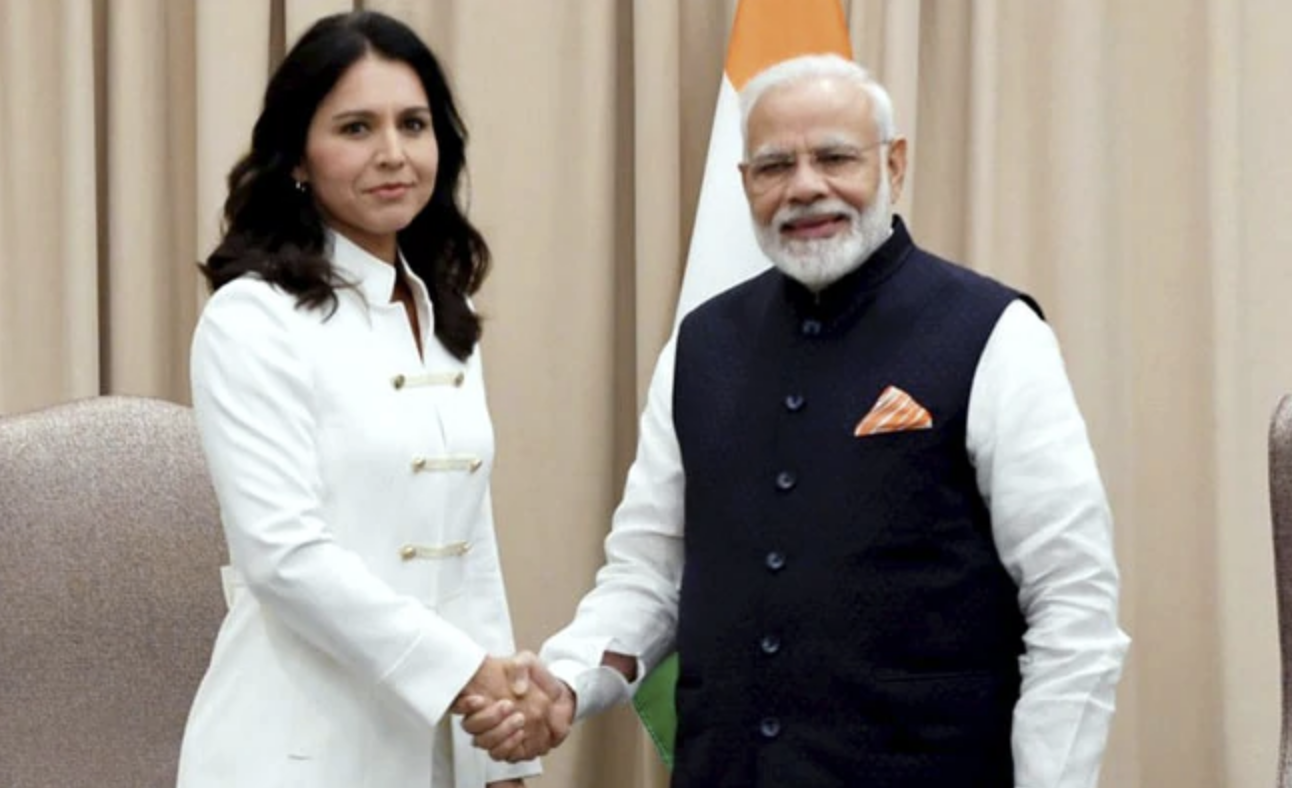Tulsi Gabbard’s India Visit: A Strategic Move to Strengthen Bilateral Ties
US Director of National Intelligence (DNI) Tulsi Gabbard arrived in New Delhi on Sunday for a two-and-a-half-day visit, marking a significant step in enhancing US-India relations. Gabbard, the first senior official from the Trump administration to visit India, engaged in high-level discussions with Prime Minister Narendra Modi and key defence and intelligence officials.
Her visit comes at a time of rising global security concerns, making the US-India strategic partnership more vital than ever. The agenda centered around defence cooperation, intelligence-sharing, counterterrorism, and transnational threats, according to reports by PTI.
Key Agendas: Defence, Security, and Intelligence
During her visit, Gabbard focused on boosting intelligence-sharing and expanding defence collaboration. The discussions included:
Enhancing real-time intelligence exchange on terror groups.
Strengthening cybersecurity measures and tackling hybrid warfare.
Increasing cooperation on maritime security in the Indo-Pacific region, a shared strategic interest for both nations.
The visit reflects Washington’s commitment to supporting India’s defence capabilities in the face of evolving global threats.
Defence Cooperation Takes Priority
The US and India have steadily expanded their defence partnership over the years, and Gabbard’s visit further cemented this cooperation. The key discussions included:
Joint military exercises to enhance interoperability.
Boosting defence technology transfer and co-development projects.
Strengthening maritime domain awareness to counter growing Chinese influence in the Indo-Pacific.
Both countries are part of the Quad alliance (US, India, Japan, and Australia), working towards maintaining a free and open Indo-Pacific. Gabbard’s visit highlights the increasing importance of defence collaboration in this region.
Counterterrorism and Transnational Threats
With global terrorism evolving, counterterrorism cooperation was a major focus. Gabbard and Indian officials discussed:
Combating cross-border terrorism, with specific attention to Pakistan-based terror outfits.
Enhancing intelligence-sharing on emerging threats.
Strengthening joint efforts to tackle radical extremism.
Both nations reaffirmed their commitment to joint counterterrorism initiatives and improving coordination on security issues.
Modi-Gabbard Meeting: Strengthening Bilateral Friendship
During her meeting with Prime Minister Narendra Modi, Gabbard praised India’s growing global influence and its role in promoting regional stability. Modi, in turn, emphasized the importance of deepening defence and security ties with the US.
The two leaders discussed:
Economic collaboration and trade relations.
Joint efforts in technology and energy security.
Cooperation on climate change and sustainable development.
The meeting highlighted the personal rapport between Modi and Trump, which has strengthened bilateral ties in recent years.
US-India Ties: A Growing Strategic Partnership
Gabbard’s visit underscores the increasing importance of US-India relations amid rising global challenges. Both countries face common threats, including terrorism, cybersecurity breaches, and Indo-Pacific tensions, making their strategic partnership critical for regional stability.
As the 2025 US presidential elections approach, the visit also signals the Trump administration’s intent to deepen ties with India, one of its key allies in Asia.
A Step Toward Enhanced Cooperation
Tulsi Gabbard’s India visit is a significant diplomatic event, marking a step toward enhanced US-India cooperation in defence, intelligence-sharing, and counterterrorism. The visit reflects both nations’ commitment to tackling global security challenges together.
With a focus on bilateral security collaboration and shared strategic interests, the visit paves the way for stronger diplomatic, economic, and military ties between Washington and New Delhi.


Leave a Reply